Introduction
Dr. Freiburger and I discussed how he has demonstrated High AQ both in terms of winning client business and during a coaching engagement. He also speculates that AQ can be an effective meeting management tool for executive coaches. The following interview is edited for clarity. This article is part of the High AQ Interview Series where executives, academics, and thought leaders discuss elevated answers. Winning DealsDr. G: “Tell me about a coaching deal you won.” Dr. Chris Freiburger: “They were interviewing other coaches. All had experience with the client.” Dr. G: “Invariably, a question is asked, ‘Why should we hire you?’” Dr. Chris Freiburger: “I would provide a story. This differs from my competitors. Most executive coaches will tell you there is a rigorous framework, 1-hour interview, tests, 6 coaching meetings, every 3rd week. They discuss a standard engagement.” High AQ Takeaway 1: If you are asked a why-question, provide a story or a theory answer. Too often those with Low AQ provide the wrong answer to the question being asked. Dr. G: “Tell me more about what distinguishes a High AQ story from a Low AQ story.” Dr. Chris Freiburger: “An effective story is a touchpoint to all of the other five High AQ answers. For example, I can transform my story into a catalyst metaphor… I’m here to challenge and push. Or, I can discuss my theory of coaching, or any of the other answer types. I can use this story to draw a contrast with my competitors who often focus upon rigid procedures and actions. In my story I can highlight that as a catalyst the procedures will sometimes be sequential, sometimes reversed. I can draw a sharp contrast between my dynamic approach and the mechanical approach of some of my competitors when it comes to coaching methods.” High AQ Takeaway 2: Those with High AQ can take any given answer and transform it into the other answer types. This makes for an economical and reinforcing conversation. Effective ConversationsDr. G: “The difference between High AQ and Low AQ is often subtle. Can you illustrate this subtle difference with a client engagement?” Dr. Chris Freiburger: “I just got off a call with an executive coaching client. I asked him a question that threw him for a loop. I said, ‘I want you to tell me, when your boss comes to you to pick your brain about ideas, does he view you as a thought leader or a thought partner?’ He wrestled with this question. Then, we discussed that a thought partner is someone you bounce ideas off (lower level thinking) and a thought leader is someone you ask for advice about the future. He got it. Then I told my client, ‘I want you to think about how you take your skills and attributes and leverage them in a way so that you become a thought leader.’” High AQ Takeaway 3: Those with High AQ are in complete command of important concepts. This example from Dr. Freiburger conveys several subtle aspects of High AQ concepts. Specifically: (1) The client conversation is centered around teasing out the differences between seemingly similar concepts: thought partner and thought leader. Additionally, by providing two concepts, the client is engaged in active thinking. Dr. Freiburger said, “I could have said, ‘part of your development need is to position yourself as a thought leader with your boss.’ I don’t think that engages him in a way that is interesting.” (2) Transform an answer into a question. Effective coaches guide a client from point A to point B in a conversation. Dr. Freiburger transformed a concept-answer (the thought leadership concept) into a question. When you understand an answer, it gives you insights into asking more interesting and effective questions to guide a client. AQ as an Executive Coaching ToolDr. G: “How can someone use AQ in executive coaching?” Dr. Chris Frieberger: “I’ve facilitated a lot of meetings with Dr. Edward de Bono’s Six Thinking Hats®. In a 30- or 60-minute meeting, most leave and have a sense that nothing was accomplished. According to Dr. de Bono’s framework, nothing gets done because everyone thinks differently at the same time. One attendee is in brainstorming mode, another in critical thinking mode. Everyone is wearing different hats. The insight of Six Thinking Hats® is to get all attendees to put on the same hat at the same time to communicate effectively. AQ can create the same type of mental alignment. For example, if a what-question is asked, all meeting attendees will know a concept and/or metaphor is an appropriate answer. If you layer in the 5 High AQ practices, you will be using the same rules of effective conversations. For example, High AQ Practice 3 (Provide Complements) holds that adjacent answers complement each other, and opposite answers can resist each other. In this manner, if a manager is a storyteller, and a procedure is the desired answer, it explains why a story provided to a how-question can derail the conversation (they are opposite answer types). I have found that when using six hats to facilitate a meeting you can take people through a meeting a lot faster and effectively. Similarly, AQ is an approach that can create alignment around questions and answers to efficiently and effectively navigate high stake conversations.
If you found Answer Intelligence (AQ)® an interesting framework, please share this post with others.
2 Comments
8/4/2023 02:22:59 pm
The procedures will sometimes be sequential, sometimes reversed. I can draw a sharp contrast between my dynamic approach and the mechanical approach of some of my competitors when it comes to coaching methods, I truly appreciate your great post!
Reply
Leave a Reply. |
Access Octomono Masonry Settings
AuthorDr. Brian Glibkowski is the author of Answer Intelligence: Raise your AQ. Archives
October 2022
Categories
All
|
About AQ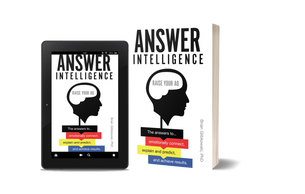
Answer Intelligence (AQ)™ is the ability to provide elevated answers to explain and predict in a complex world, emotionally connect, and achieve results. Are you conversation ready?
Meet HarperHarper's story illustrates the transformative power of AQ in her own career and in the success of her organization.
|
AQ Upskilling PlatformAI is machine thinking. AQ is human thinking (developed based on academic research) in terms of simple questions (why, what, how, when, where, who) and answers (concept, metaphor, theory, story, procedure, action) that elevate human-to-AI and human-to-human communication.
|
Quick Access LinksBuy the Book
Explore AQ (Free Assessment) AQ TEDx Video Professional Services Firms + AQ Brian Glibkowski, PhD - AQ Creator Meet Harper - Overview Video Meet Mark - Software Case Reasons You Need AQ |
Featured |

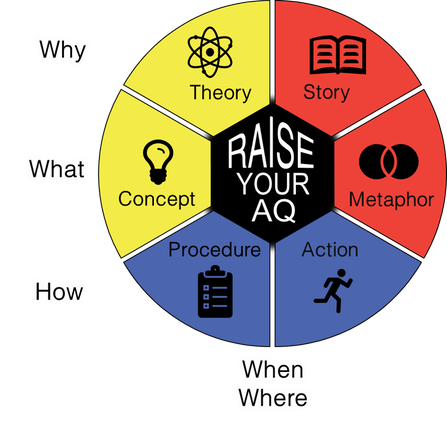
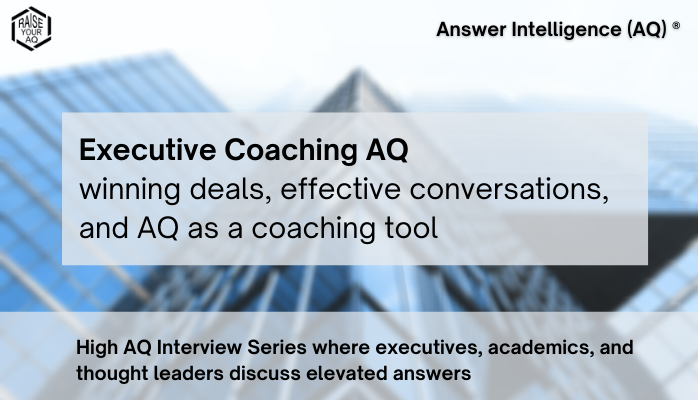
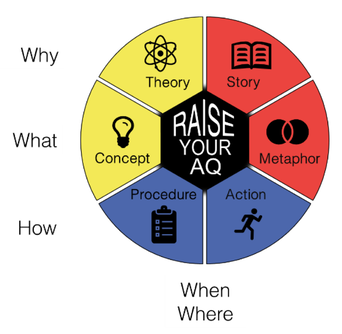
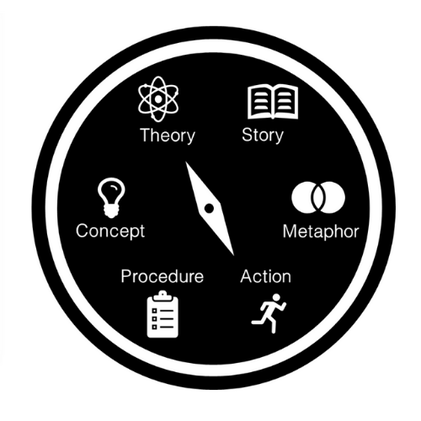
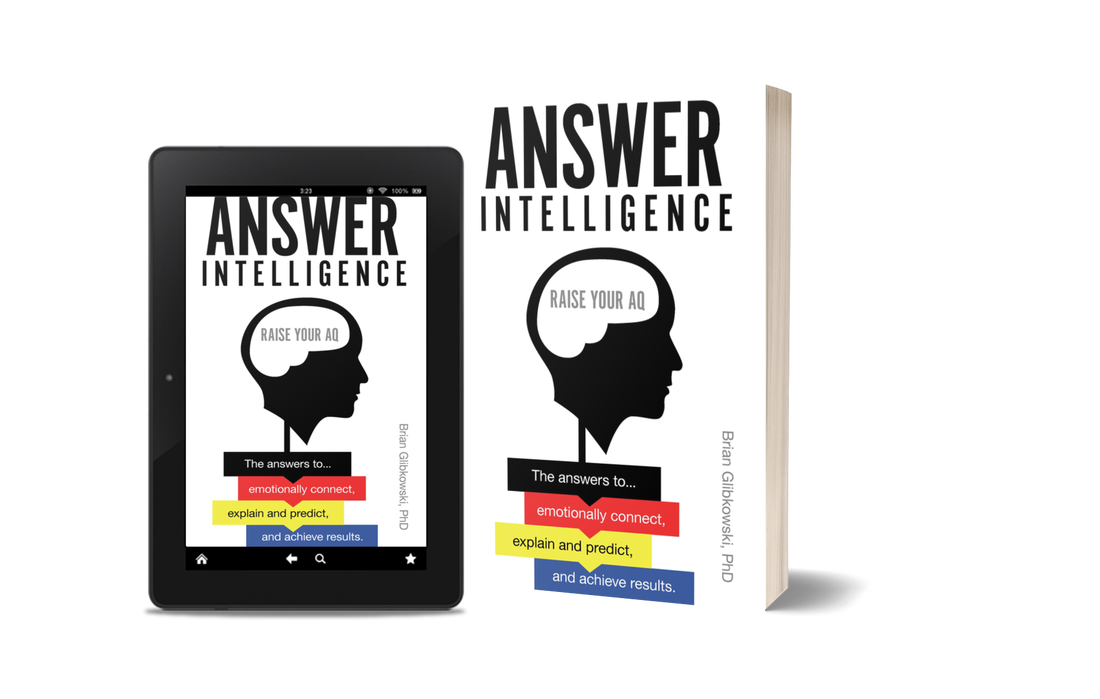
 RSS Feed
RSS Feed